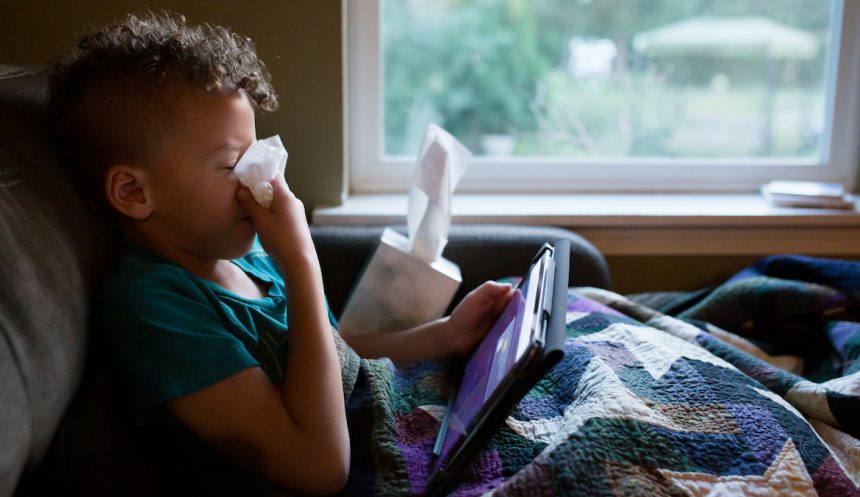You wake up feeling congested, fatigued, and maybe with a headache. Knowing when to stay home from work or when to keep your child home from school can be challenging. Joel “Gator” Warsh, MD, a board-certified pediatrician, emphasizes the importance of taking sick days when necessary to rest, recover, and prevent spreading germs in the community.
Experts In This Article
- Joel “Gator” Warsh, MD, board-certified pediatrician and founder of Integrative Pediatrics and Medicine Studio City in Los Angeles
- Robert Biernbaum, DO, emergency medicine physician and chief medical officer at WellNow Urgent Care
While prioritizing sick days is important, real-world pressures and expectations can make it challenging. It’s crucial to know when to give yourself or your child a break.
When to Stay Home From Work
The CDC recommends staying home if you have symptoms of a respiratory virus, such as chest discomfort, chills, coughing, fatigue, fever, headache, and more. Return to work only when symptoms have improved for 24 hours without a fever.
If you must go to work, minimize contact with others, wash hands frequently, and stay home if you have a fever or flu-like symptoms. It’s important to prioritize rest and recovery, even if it means taking a sick day.
When to Call Out Sick When Working Remotely
Listen to your body when working from home. If symptoms impair your ability to focus, sign off for the day to rest and stay hydrated. Your well-being matters, even when working remotely.
When to Keep Kids Home From School
Similar to adults, children should stay home with respiratory virus symptoms. Check with the school for guidelines and observe consistent symptoms to determine if your child genuinely needs time off. Encourage open communication to address any underlying issues causing stress or anxiety.
When to Go to the Doctor
For mild symptoms, manage at home. Contact a doctor if symptoms worsen, such as persistent fever over 101°F, shortness of breath, or intense headache. For children, seek medical care for prolonged fever or severe symptoms like wheezing or ear pain.






